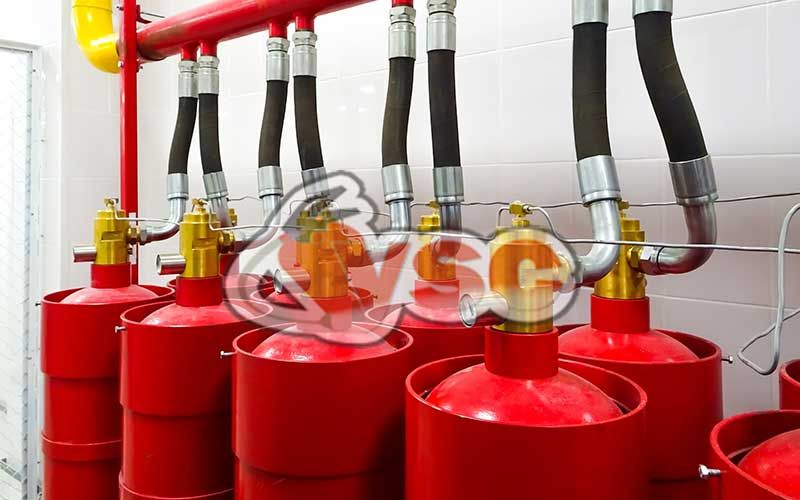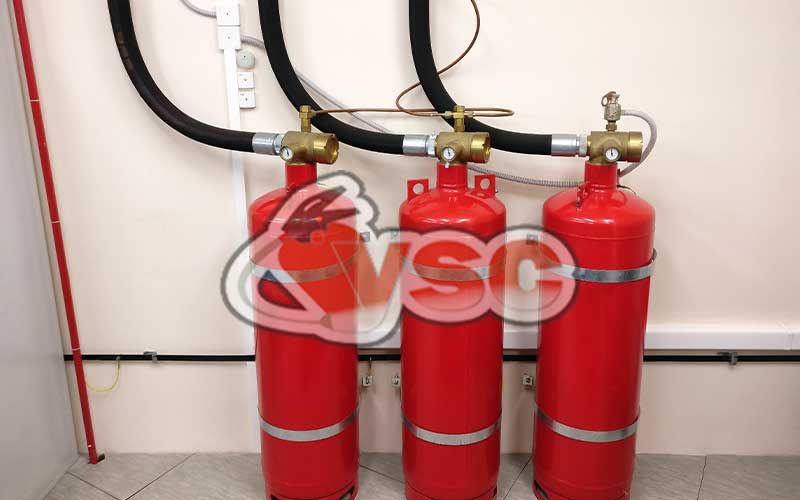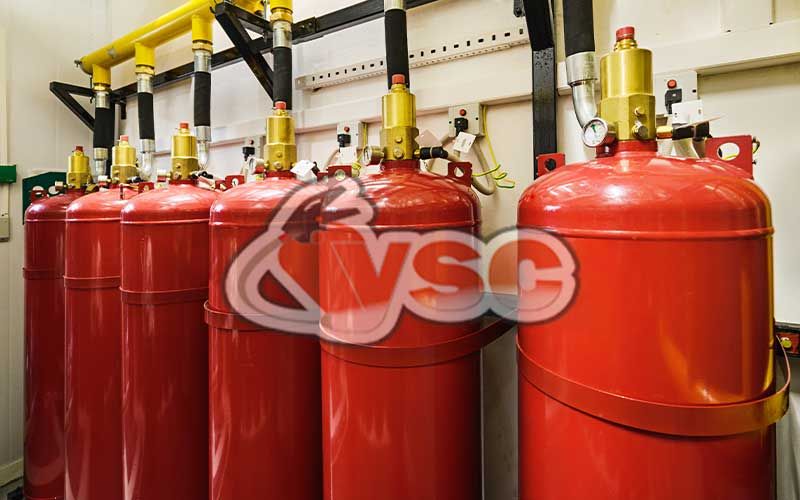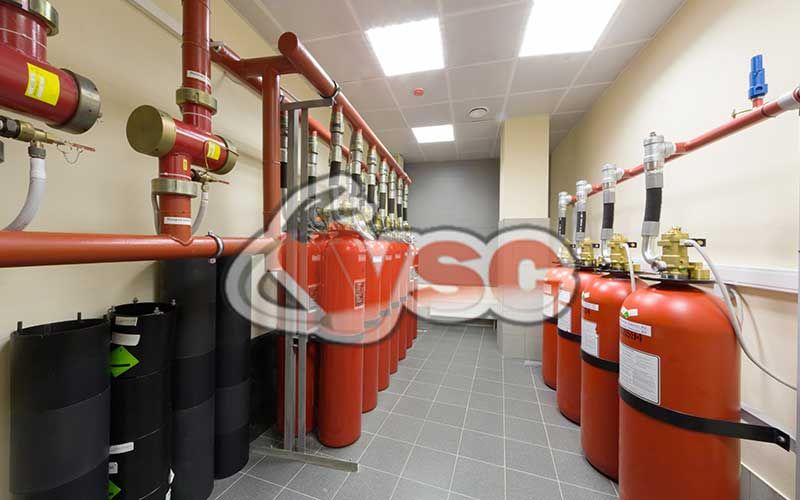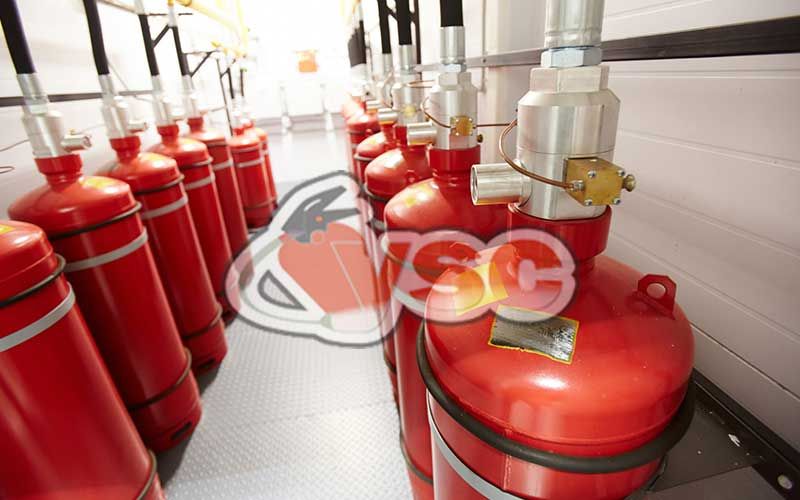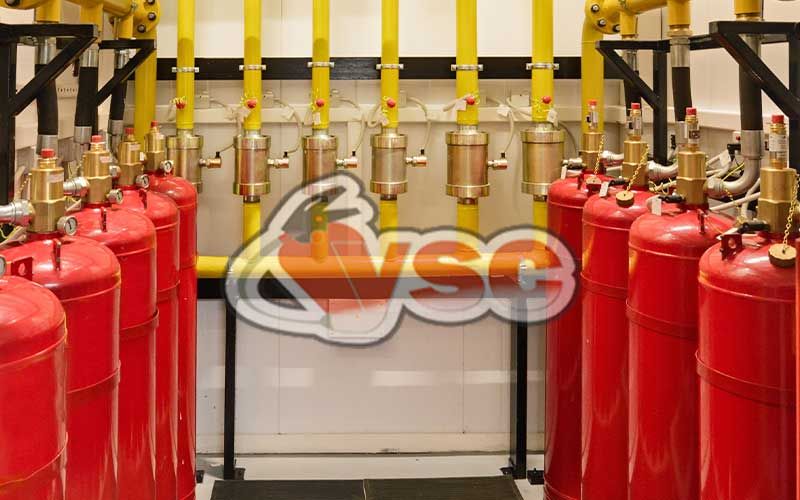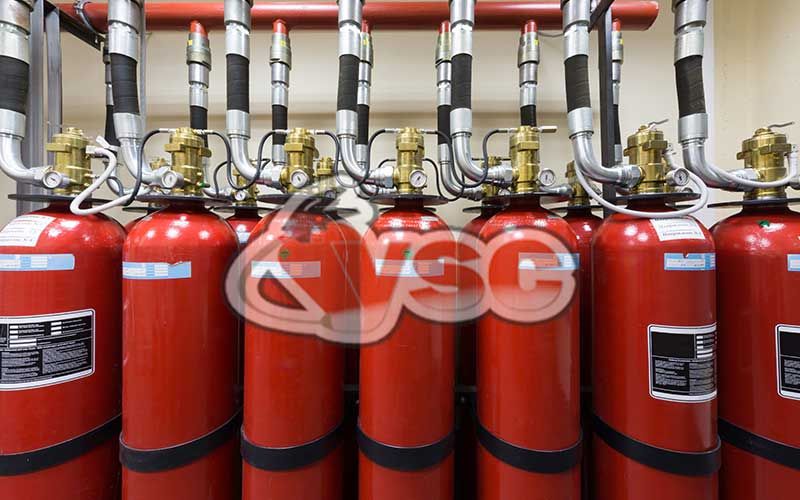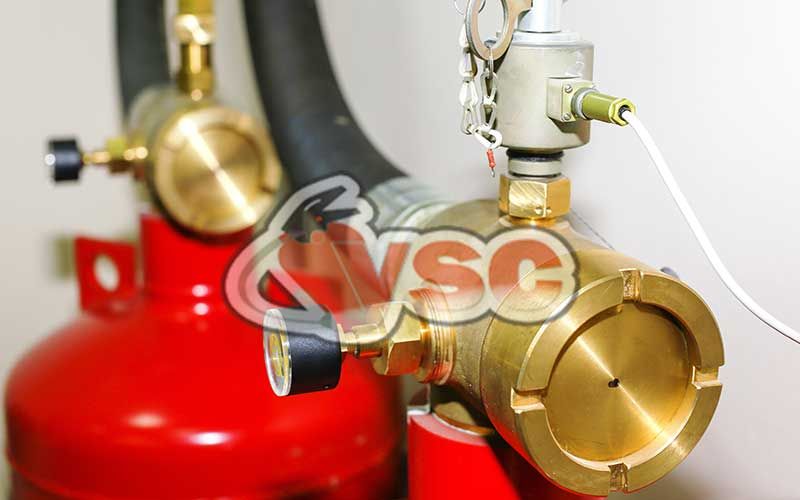FM-200 Gas Fire Suppression Systems
FM-200 Gas Fire Suppression Systems, one of the most effective systems in combating fires, which are situations we never want to encounter in our lives, can be used in various working environments. FM-200 gas, with its colorless and odorless properties, is a preferred extinguishing agent due to these characteristics. It is also known to be safe because it is non-conductive to electricity. Moreover, it does not harm the ozone layer as a residue after use, contributing to environmental protection.
Comprising storage, distribution elements, other components, control panels, early warning, and detection devices, FM-200 Gas Fire Suppression Systems provide comprehensive fire protection when properly installed and secured. The gas contained in the cylinders, technically routed through pipes, is ready for use, which is a significant advantage for protected areas. It can be rapidly discharged under pressure when needed.
What is FM-200 Gas?
FM-200 gas, scientifically known as HFC-227EA, is a compound consisting of fluorine, hydrogen, and carbon. It is one of the most commonly used types of gases in fire suppression systems. Of course, it is important to use FM-200 gas in suitable fire types and flammable materials to achieve high extinguishing effectiveness. In laboratory conditions, FM-200 gas is known by the name Heptafluoropropane.
The most suitable condition for placing FM-200 gas in cylinders is under a pressure of 25 Bar. When in liquid form, it transforms into gas under pressure to intervene in a fire. It is a highly popular and successful fire suppression gas due to its ability to leave a preventive effect against re-ignition by extinguishing the area affected by the fire.
FM-200 Gas Fire Suppression System Calculation
Calculating FM-200 Gas Fire Suppression Systems requires a scientific approach and should be conducted by expert engineers. All relevant criteria are taken into consideration in this calculation. Technical specifications may also play a role in the system calculation. However, generally, the following components are involved in the calculation of FM-200 gas fire suppression systems:
- Suppression Design Concentration
- Hydraulic Calculation
- Cylinder Calculation
- System Equipment
- System Valve
- Electric Activator
- Manual Activator
- Pneumatic Activator
In the calculation of FM-200 gas fire suppression systems, one of the crucial factors to be considered is the percentages to be used based on the fire class. For Class A fires, the FM-200 suppression design concentration is typically between 7.9% to 8.5%, varying based on the level of risk. For Class B fires, it is generally considered to be 9%.
FM-200 Gas Fire Suppression System Features
The features of FM-200 Gas Fire Suppression Systems are highly valued by users. The most noticeable and desirable characteristics are its colorless and odorless properties, as well as the fact that it leaves no residue after use. Additionally, its non-conductive nature is extremely important in preventing potential electrical hazards during fire incidents, ensuring the safety of individuals.
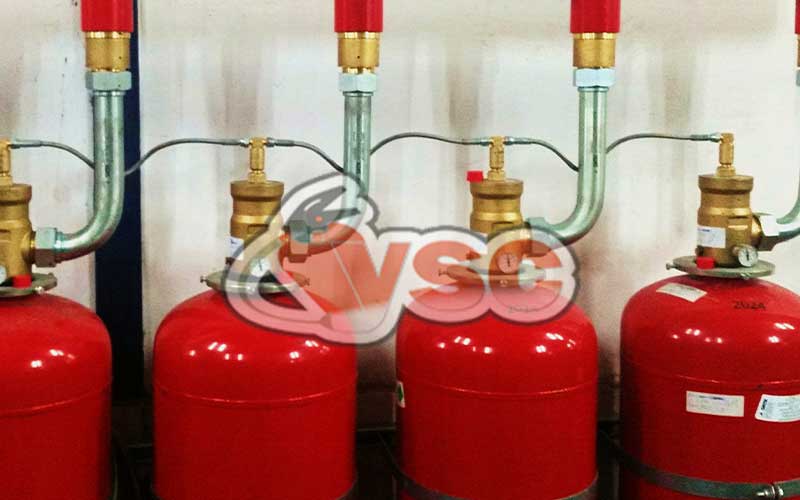
It is also primarily preferred for its environmentally friendly nature. During fire suppression activities, it does not cause any chemical harm in case of exposure. It does not damage materials in the area being extinguished during intervention. In terms of financial aspects, it is a highly profitable fire suppression system with easy refilling and cost-effective structure.
-
FM-200 Gas Fire Suppression Systems
-
Kitchen Hood Fire Suppression Systems
-
Sprinkler Fire Suppression Systems
-
Carbon Dioxide Extinguishing Systems, CO2 (What is it? How is it used?)
-
FE25 Gas Extinguishing Systems (Working Principle and Price)
-
In-Panel Micro Extinguishing Systems (Electricity Panel)
-
Clean Gas Fire Suppression Systems (How Does It Work? Gases Used?)
-
NOVEC 1230 Fire Suppression Systems (Gas)
-
Argon Gas Extinguishing Systems (INERT Gas, Turnkey)
-
Vehicle Extinguishing Systems (Tube, Maintenance)
-
Fire Detection and Warning Systems
-
Foam Extinguishing Systems




